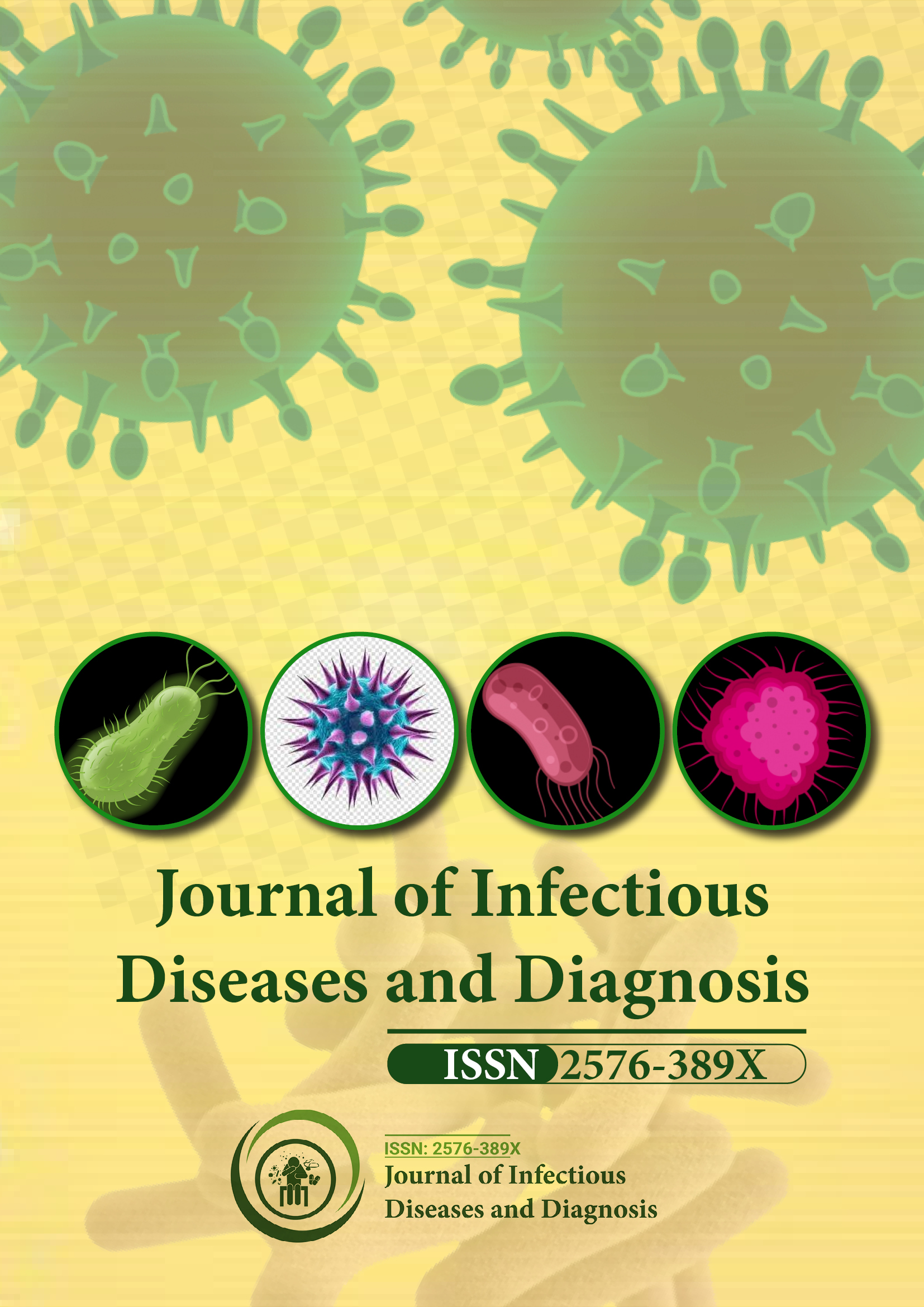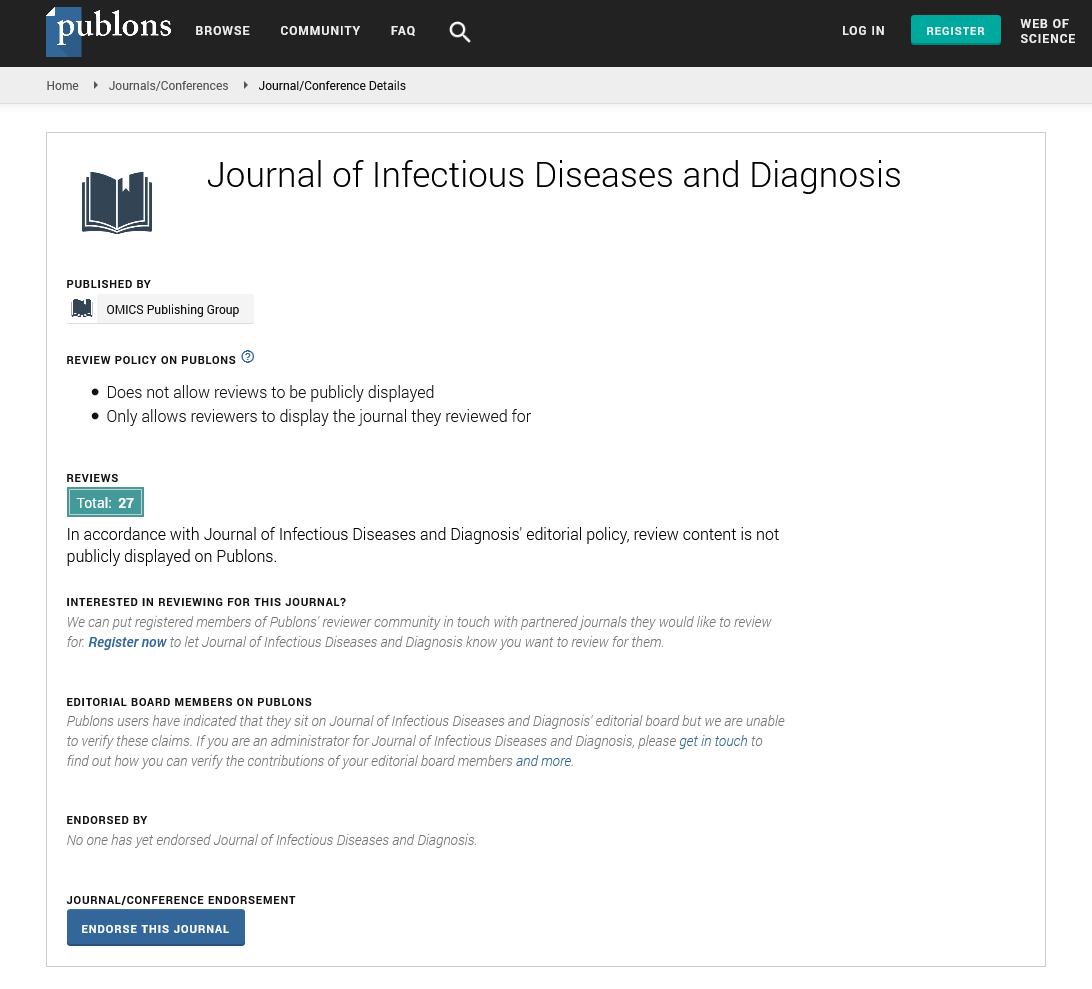Indexed In
- RefSeek
- Hamdard University
- EBSCO A-Z
- Publons
- Euro Pub
- Google Scholar
Useful Links
Share This Page
Journal Flyer

Open Access Journals
- Agri and Aquaculture
- Biochemistry
- Bioinformatics & Systems Biology
- Business & Management
- Chemistry
- Clinical Sciences
- Engineering
- Food & Nutrition
- General Science
- Genetics & Molecular Biology
- Immunology & Microbiology
- Medical Sciences
- Neuroscience & Psychology
- Nursing & Health Care
- Pharmaceutical Sciences
Editorial - (2021) Volume 6, Issue 4
In Sub-Saharan Africa Infectious Diseases Test could be Determined by using Smartphone
Mahmoud Koroma*Received: 15-Nov-2021 Published: 07-Dec-2021
Editorial Note
Initiatives focused on using established mobile technologies like text messages and calls to connect healthcare workers and patients for each other, and to check results. In addition, patients worried a few potential HIV infection could be more inclined to get tested if they could do it at home and avoid the stigma of attending a clinic. Various smartphones have sensors made that could aid diagnosis, for example, a heart rate monitor and an oximeter, just as a camera and microphone that can be utilized to examine pictures and sounds like an person's breathing. Furthermore, simple testing technologies are being developed that can be connected to a phone, through a USB stick or wirelessly. In theory, an individual could test themselves utilizing a simple to-gather test, like a pinprick of blood, and the results would be scanned onto mobile applications. The applications would send the results to local clinics before being uploaded to central online databased instead of patients having to attend in person. It's a good idea that telephones can likewise assume a significantly bigger part in medical services than they as of now do. Smartphones are increasingly used in sub-Saharan Africa. By 2020, one in two mobile phone connections in the region will be via smartphone a similar figure to worldwide smartphone adoption. This presents a major opportunity to harness the prevailing technology where clinics in rural areas are often scarce. Approaches outlined within the review include apps that use the phone's camera to interpret test results, send findings to local clinics or healthcare workers, and host virtual follow-up appointments with healthcare workers. These approaches might help increase rates of disease testing in regions with limited facilities. Combined, the test results would build an image of symptoms across a neighbourhood to assist predict and fight current and future outbreaks. It marks sense that phones can also show an smooth role than they already do. These ideas are not without challenges. Although quick technological advances have further developed admittance to testing, in excess of 35% of the world has no admittance to cell phones. It is likewise simpler to precisely gather and examine tests in a medical care setting, where there are prepared staff and the climate is intended to be clean, than in an individual's home. Shielding measures should be set up to secure protection and secrecy of patient information. These actions should likewise be completely disclosed to clients to construct trust in and empower the reception of these new medical care administrations. All things considered, the report's creators stay hopeful. Starting at 2016, worldwide cell phone reception has arrived at 51% and is anticipated to continue to fill especially in asset restricted settings like sub-Saharan Africa. This means more of the total populace is furnished with an incredible pocket PC that can interface patients and offer medical care information. This is an interesting chance for scientists and policymakers to foster new apparatuses and frameworks that could definitely work on human wellbeing and prosperity later on.
Citation: Koroma M (2021) In Sub-Saharan Africa Infectious Diseases Testing could be Determined by using Smartphone. J Infect Dis Diagn. 6:e113.
Copyright: © 2021 Koroma M. This is an open-access article distributed under the terms of the Creative Commons Attribution License, which permits unrestricted use, distribution, and reproduction in any medium, provided the original author and source are credited.

